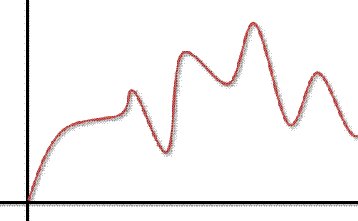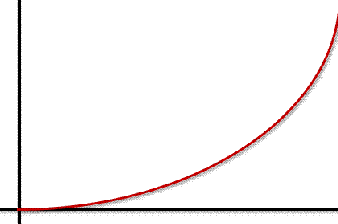Church growth. It is a phrase tossed around a lot. Some use this word to talk about a movement in the church on earth which seeks to use psychological and sociological insights in order to increase outreach potential. Others simply use it to speak of an increase in church attendance or membership. Others still use it simply to refer to the ongoing harvest Jesus promised in his Church.
A pastor friend (Pastor Dan Galchutt) and I were talking about this concept largely in terms of how it is thought of a the congregational level. We were discussing what most people envision when they talk about the church growing. He made a wise observation which I will try to capture here in words and graphics.
There are two ways one can count the number of people in the Church at any point. We can count the total number of people on earth that are members of the visible church. Or else, we can count all of the living in Christ, not just those still here on earth but also those with Christ awaiting the resurrection.
If you count the first way, the chart throughout history well could look like this:
This chart has no specific data reference because the data here is not important to the point. The point of the chart is this: if you are counting the number of Christians living in the church on earth, throughout history the number can go up and down. There are periods of growth and there are periods of decline.
However if you count the second way: the numbers throughout history would look more like the trend in this chart:
While certainly people can fall away from the faith, the church continues to grow in each age on the whole because those who have died in the faith remain among the living in Christ. And therefore, even if only one new Christian was added in a generation the total number of those in Christ would increase.
Most people count church growth in terms of the numbers of the church on earth, and yet they expect the graph to look like the second one. They assume that the church in each generation on earth will necessarily be larger than the church on earth in the generation before it if the church is doing her work. This simply is not always true. Jesus promise of growth is holistic in the grandest sense, including all the living in Christ, those here and those with him. The church on earth has periods of growth and periods of decline based on the rejection of the gospel present in each age. Ultimately, the church on earth grows or declines as the Spirit wills.
Does that mean then that Jesus’ promises about the church continually growing are false if we have less people in our churches in 2012 then we did in 1960? Does it necessarily mean that the church is being less faithful now than it was before? Hardly. For the total number of people living in Christ continues to grow according to his promise.
If you think your particular congregation must have more members than it used to in order to prove its faithfulness to Christ, you have missed the fact that the church on earth grows when and where the Spirit wills. No doubt, we all hope our congregations will be filled with more and more Christians. But at the same time, we must recognize in our day that the gospel message and the moral truths that we present are becoming more and more unpopular culturally. To expect great growth in the church on earth would be illogical according to reason. If God brings great growth in our day, praise be to him. We will stop and marvel at what he is doing for he will have brought about a most unlikely surge of the Kingdom.
You and I must be able to see beyond our nose and our day. We must know that the church is still growing just as Jesus promised. Perhaps not all of our congregations are larger than they were a few decades ago, but the Church, Abraham, Isaac, Jacob, and all the rest of us right down to that last baptism, continues to grow so long as the Word of God is proclaimed and the sacraments are administered.



Very good insight! I had never really thought about it this way before.
Terry Reed
Small Church Tools
I was baptised into our LCMS shortly after I was born in 1940. A few years ago I read some from my Mother’s diary, and also My Father’s 1944 ARMY service book. This was at least ten years after my Father died. I found a wealth of personal thoughts or information about the first years of their dating, and marriage. In 1944 my Dad wrote in Army basic training, that he was thrillrd that my Mom had said she would start taking us children to Zion Lutheran Church in Wilton, Iowa. This ties in well with Father’s day, and the graphs you talk about here.
I know my family history back to when they boarded the ship to America. I know the names of my great aunts and uncles. Sat in the lap of my grand parents. But today this person who was again installed as our congregation’s evangelism chair last sunday, never did I see such an interesting chart that brought the saints of my family into the living membership of Christian churches. Yes I understand wording of joining our saints at the commuinon rail, but the concept of putting them into the evergrowing living member of the Spirit is breath taking …. but perhaps that even breathtaking should not be used here? Is it not the Breath Of God who gives us His spirit passed from generation to generation. Yet our Lord reaches down to us through that breathed in spirit, given to AdAM … and then breath-taking is the accepted thing to do as we join the communion of saints in our own personal wayS?